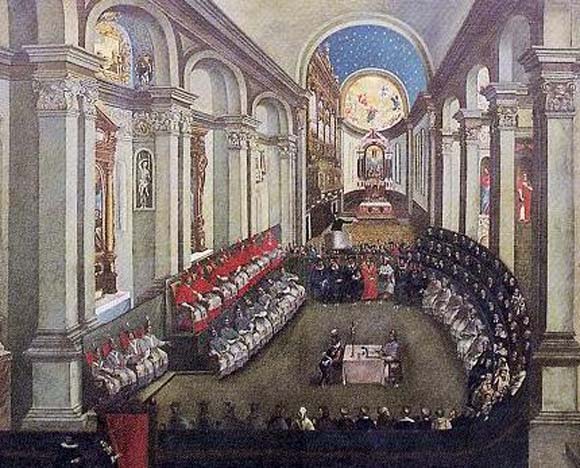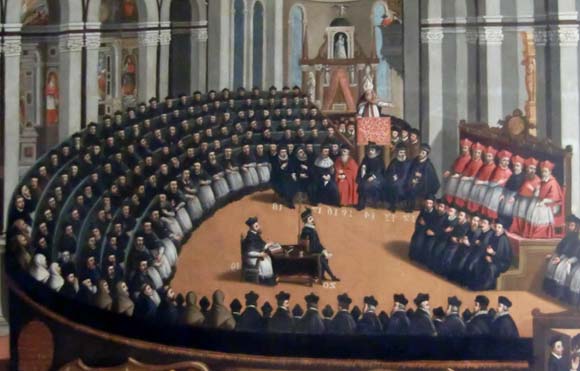
Councils of Faith: Trent (1545-63)
1.52k
Back in June, Br Gustave noted that just a matter of months after the end of Lateran V, Martin Luther posted his ninety-five theses onto the door of Castle Church in Wittenburg (following the University customs): although largely a symbolic act, the ideas of Luther, Calvin and Zwingli unleashed a theological maelstrom in the Western Church, dividing Christian against Christian and spreading confusion and mutual misapprehension. The need for the Church to articulate a strong and unified theological response to the challenges of Reformation theology led to the convening of the Council of Trent, less than half a century after the conclusion of Lateran V.
Doctrinally, the Council of Trent (which ran from December 1545 to December 1563, under the authority of three sovereign pontiffs), is the most extensive of all ecumenical councils, offering a theological synthesis of normative significance for all subsequent Catholic theology. Responding to the challenges of the sixteenth-century reformers, it treated the canon of scripture, the relation of grace and nature, and the appropriate understanding of original sin and its effects, as well as clearly defining the sacraments (using the tools of medieval scholasticism to provide necessary clarity). In order to respond effectively to the threat of the Reformation, the Council was concerned to secure the widest possible agreement amongst Catholic theologians, although it did not desist entirely from settling intramural debates where necessary.
Although the teachings of Franciscan John Duns Scotus were very widely consulted by the Fathers, Trent articulated an essentially Thomistic theology, particularly in its treatment of the sacraments. Indeed, it is often claimed that the Summa Theologiae of the Angelic Doctor was placed on the altar at Trent, alongside the Holy Bible (although given the presence of so many theologians from diverse traditions, this may have been unduly provocative and may reflect a later interpolation into the events of the council): either way, it is clear that Trent is an important turning point in the reception of Aquinas’s thought.
Luther had been alarmed by the moral failings of the Church, and this was a theme that the Council Fathers could not avoid addressing in some detail (issuing decrees tightening clerical discipline and requiring bishops to take a greater interest in the moral character of the clergy). The Council moved to standardised the liturgy of the Church, promulgating a revised breviary for the piety of the clergy and a revised version of the Missal in 1570. The publication of a ‘Roman Catechism’ in 1566 highlights the council’s commitment to the dissemination of sound doctrine. As a result of the Tridentine movement, priestly formation moved towards the present day seminary system, strengthening the doctrinal formation of the clergy and requiring their residence in centres that were required to stress personal discipline, prayer and moral rectitude.



